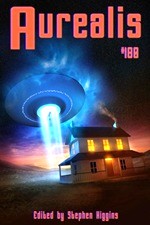“A Hole in the Earth” by Alexander Lwin
“The Cloth Wall” by James Rowland
“The Sea in the Darkness Calls” by Em Dupre
Reviewed by Victoria Silverwolf
In “A Hole in the Earth” by Alexander Lwin, a scholar studying the history and mythology of wells enters an ancient structure in China, with terrifying results.
The one notable feature of this otherwise typical horror story is the fact that it is told in the form of lecture transcripts, interviews, articles, descriptions of photographs, emails, and so forth. This epistolary structure adds a touch of realism to its familiar Lovecraftian plot.
Set during the time of King Richard II’s war with France, “The Cloth Wall” by James Rowland features a knight who enters the city of Ypres, under siege by the English, in order to destroy the magic tapestry that protects the place. Instead, he makes a deal with the woman whose weaving enchants the tapestry. The situation does not work out well for them.
The historical background is convincingly integrated with the fantasy premise. The story can be read as an account of two people with good intentions whose desire for peace is swept aside by the forces of history. An early scene, in which the knight encounters a former worker with magical cloth fallen on hard times, is intriguing but adds little to the plot.
“The Sea in the Darkness Calls” by Em Dupre takes place in North Korea in the near future. A man has a scheme to escape, but the discovery of an item of advanced biotechnology changes his plans radically.
The author convincingly portrays an oppressive society, with touches of convincing futuristic technology. The biotechnology that drives the plot is less plausible, seeming more like magic. It might be mentioned that the story’s illustration gives away too much about the premise.
Victoria Silverwolf got to work early tonight.
 Aurealis
Aurealis